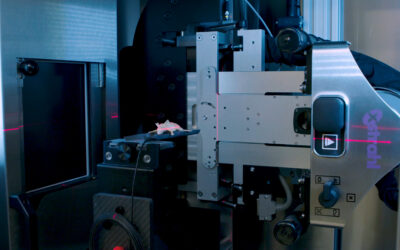[:us]Publication/study:
Authors:
Vincent Paget, Mariam Ben Kacem, Morgane Dos Santos, Mohamed A. Benadjaoud, Frédéric Soysouvanh, Valérie Buard, Tarlet Georges, Aurélie Vaurijoux, Gaëtan Gruel, Agnès François, Olivier Guipaud & Fabien Millia
Key findings:
While studies have been done to show the effects of X-rays on cells, no study has yet provided an in-depth comparison of the relative biological effectiveness (RBE) of two X-ray beams of varying energies. In this study, researchers sought to explore this subject and, using Human Umbilical Veins and Epithelial Cells (HUVECs), “focused on cellular outcome up to 7 days after 220 kV and 4 MV X-ray irradiation, using the same dose rate (2.5 Gy/min), and covering a wide range of doses (0, 2, 4, 5, 6, 10 and 20 Gy).” Ultimately, the study showed that “high-energy X-rays significantly induce more adverse effects in HUVECs than low-energy X-rays” and that—contrary to the standing assumption—the “RBE of X-rays (energy from 0.1 to 3 MeV) is not equal to 1.”
The value of SARRP:
Researchers needed two radiation systems with difference capacities for this study. The lower-intensity 220kV irradiation was performed using the Xstrahl SARRP, which was selected because “it is considered as equivalent to the classic beam references such as 60Co γ rays12.” The higher 4MV X-rays were delivered via the Linear Accelerator (LINAC) Elekta Synergy Platform. According to the study, “HUVECs were irradiated with high- (4 MV) or low- (220 kV) energy X-rays in clonal conditions (clonogenic assay) and at confluence for all other assays (viability/mortality, γ-H2AX foci, cell proliferation and senescence).”
The SARRP’s flexibility allowed researchers to configure their ideal irradiation setup, using only 4 of 6 wells and replacing plastic plate covers with sterile thin films. These detailed adjustments enabled the team to better prevent errors in dosimetry, maintain X-ray field homogeneity, and avoid X-ray spectrum attenuation.[:]







